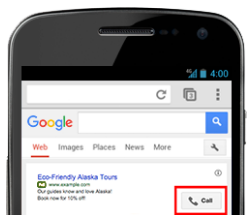Top 10 Types of B2B Lead Generation Content
by MGB2B
Have you ever experienced “writer’s block?” Sometimes instead of not knowing what to write, the trouble is figuring out what form to write it in that will entice new leads to engage. This is a content rut and it happens to everyone.
Fear not, because Mascola B2B has compiled a list of the top 10 performing B2B lead generation content pieces. Say goodbye to your tired content calendar and hello to your list of fresh, new leads!
- White Papers. Tried and true, white papers are a standard for offered-value. People download them because they are authoritative, detailed, and informative. When you’re looking to pack a punch with your offering, a white paper will do just that.
- Podcasts or Videos. If you have the time and bandwidth, audio and video content are two great ways to engage your audience. They’re opportunities to put a voice to your brand and allow your team to show their creative side. When it comes to generating leads, be sure to include a form fill so your listeners/viewers can subscribe.
- Contests. Who doesn’t love to win something? Contests are great for driving engagement, growing your reach, and, most importantly, generating leads. Contests also adapt to many online platforms like your website, lead gen landing page, and social media channels.
- Ebooks. Like white papers, ebooks provide a comprehensive look at a specific topic. Ebooks tend to be a little more creative, so be sure to inject a combination of information and creativity into yours.
- Checklists. Unlike many content formats, checklists are short, simple, and easy to generate internally, while simultaneously offering unique, digestible content to your readers. Include clear headers and keep copy brief.
- Templates. A template is a strong offering because it provides the reader with a usable tool for creating an original piece of their own. Templates can take many forms such as calendars, outlines, plans, or worksheets. And each time your downloader wants to create a new piece, he or she will be reminded of you upon returning to the original template.
- Original Data & Research. There’s no offering more unique or informative than original research findings from your company. One of the least expensive ways to curate original data is to conduct a survey and share the results via a downloadable report or infographic.
- Demos. You’ve hooked your reader with a few blog posts, a podcast, and perhaps a white paper. Now they’re ready to give your product a try. Create an enticing free offer with language reinforcing the highlights of your product. Also, make sure it’s seamless to schedule a demo.
- Tool Kits. If you have a bunch of related pieces of content lying around, a tool kit is a great way to re-purpose them into a meaningful, cohesive collection. This can be a great follow-up method for connecting with past customers or readers who have downloaded a few pieces of your content.
- Webinars. A webinar is a useful format for combining an authoritative tone on a topic with the personality of your company’s leadership. However, a successful webinar can take a lot of work. Try partnering with your industry’s leading trade publication to produce a sponsored webinar and let the pros handle the hard part, while you get to play host and collect the leads.
From templates to white papers to podcasts, there are endless types of B2B lead generation content out there. The key is finding the right mix of what works for your business while keeping your audience alert and engaged with new topics and formats.
Still stuck in a content rut? Mascola B2B is here to help.
Continue ReadingRoads to Success: AdWords Device Bidding for B2B Marketing
by MGB2B

The hottest word in digital marketing is “mobile.” This is nothing new, of course. For years we’ve been seeing that mobile search traffic growth is increasing. As the screens we carry in our pockets become more and more integrated into our personal and professional lives, this trend will just continue. And now Google has made mobile content the first indicator for search rankings. This makes “mobile first” a necessity more than a suggestion. Now is the perfect time to start optimizing your B2B marketing efforts for searches across multiple devices.
Thankfully, Google AdWords now allows marketers to make device-based bidding choices on all three device categories: Desktop, Mobile devices with full browsers, and Tablets with full browsers. For years, we’ve had the ability to make bid adjustments for our mobile search traffic, but Desktop and Tablet bidding had always been grouped together. That’s no longer the case. Now we can set our base bid for any of the three devices, and then make bid percentage adjustments for the other two. This is a fantastic change to the AdWords bidding landscape — a leap forward for many B2B marketers, who for years have seen the differences in traffic performance from each of the device groups in their segmented data.
The Best Ways to Use Device Bidding for B2B Marketing
You can read about the “mobile first” traffic trend all day. But how searches from different devices affect your B2B marketing efforts can vary wildly depending on your industry. Luckily, you can find a wealth of data on how Desktop, Mobile, and Tablet traffic perform specifically for your business right in your Google AdWords reports. By segmenting your historical AdWords data by device, you can see where the majority of your clicks and impressions are coming from, and how they perform compared to one other.
For instance, you might find that while the majority of your paid search traffic still comes from desktop, the traffic that comes from mobile devices typically comes in at a better Position and Click-thru-rate/Conversion rate at a lower Cost-per-click. This would suggest you should increase your mobile bid to take advantage of this trend. Or, you might see that mobile and desktop searches make up the bulk of your traffic, but when searches come from tablets they perform far worse. From here you might decide to reduce your bid for tablets and allocate more of your budget to the higher-performing mobile and desktop searches. Whatever the data tells you, you now have the tools to make informed decisions.
While the trend towards “mobile first” is obvious and inevitable, at the end of the day, the device-bidding actions you take now should be based on what works best for your brand. When you combine these new tools with your deep insights into your markets, the possibilities are endless. Keep in mind that all the bidding adjustments you make might be in vain if you haven’t created a mobile-friendly version of your site. It’s also important that it loads quickly and is easy for customers to navigate across different screen sizes — a good reason to have a responsive design if you don’t already.
The routes customers take to reach your business are constantly evolving. Make sure your company is taking advantage of every available road to success.
Continue ReadingA Call to Arms: AdWords Ad Extensions Can Be Your Greatest B2B Digital Marketing Ally
by MGB2B

HEY YOU!!!
Did I catch your attention? One of the overall goals of any B2B digital marketing campaign is to catch the audience’s eye and stand out from the competition. In a highly competitive arena like Google paid advertising, where our opportunities to attract quality attention are governed by strict rules like not being able to write something cheesy like “HEY YOU!!!” in an ad’s headline, and even stricter character limits, although this is getting a bit better lately with Google’s addition of new Expanded Text Ads, finding a way to separate yourself from the playing field can often be daunting. But fear not: Ad Extensions are here!
Any AdWords marketer worth their digital salt knows about ad extensions. They’re those complimentary bits of information that can show next to or below a text ad. There are a wealth of these extensions, and each allows the marketer the opportunity to give their audience a bit more info connected to their ad. But let’s focus on two that often go overlooked when setting up a B2B digital marketing campaign in AdWords.
AdWords Ad Extensions: Your Greatest Ally in the Fight for B2B Audiences’ Attention
Call Extensions: Call extensions allow you to show the phone number of your company alongside a text ad. This is a great way to improve your audience’s engagement with your ads. If a customer is using a desktop computer, your text ad will show your company’s phone number below the headline. If they’re searching on a smart phone, a “Call” button will show next to the add, allowing the customer to call you directly from the Google search results page with just one touch of their screen. This can be particularly handy in the B2B market, where an on-the-go salesman or contractor is searching for your company’s offerings.
Callout Extensons: Callout extensions run below a text ad providing added details about your company or offers, like the “Free Shipping” etc. in the ad below. These extensions offer you a fantastic way to highlight the key elements of your business in a structured line, and can be set up on an account, campaign or ad group level. And unlike their cousin Sitelink extensions, Callout extensions aren’t a clickable link and don’t require a unique attached URL. This allows you to single out special offers and calls to action, while still directing the audience to the landing page you’d originally chosen for your text ad. When trying to catch the attention of a busy B2B searcher, this can make or break an ad’s performance.
While both of these extensions offer their own specific audience engagement opportunities, they also provide an even more valuable service: they grab the searcher’s attention and make your ad stand out from the rest. On a search results page any available space is valuable, and both of these extensions allow you to take up more space than a stand-alone text ad would. And they add an air of authority and credibility to your ads, encouraging click confidence in your audience.
Historically, ads that show extensions like these can expect to see above average click-thru-rates and lead to conversions with lower cost-per-acquisitions, which are metrics any B2B digital marketer likes to see. Couple Call and Callout extensions with a well written, relevant text ad and you’ll be seeing better return-on-investment in no time.
The B2B paid advertising landscape on Google can often fell like a battlefield. Call on these ad extensions to help you win the fight! Need reinforcements? Drop us a line.
Continue Reading

